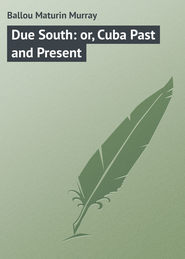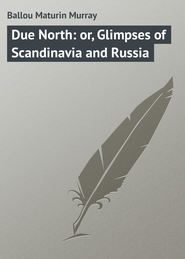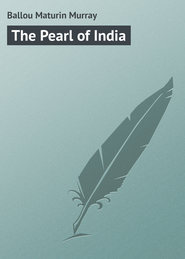По всем вопросам обращайтесь на: info@litportal.ru
(©) 2003-2024.
✖
The New Eldorado. A Summer Journey to Alaska
Настройки чтения
Размер шрифта
Высота строк
Поля
The great Tacoma sawmill does a very large and successful business, finding its motor in a steam engine of fourteen hundred horse-power, and having over seven hundred men on its pay-roll. This number includes mill-hands, dock-men, choppers, and watermen, the latter being the hands who bring the logs by rafts from different parts of the sound. There are a dozen other sawmills in and about the city. The lumber business of this region is fast assuming gigantic proportions, shipments being regularly made to China, Japan, Australia, and even to Atlantic ports. A whole fleet of merchantmen were waiting their turn to take in cargo while we were there. We believe that Tacoma will ere long become the second city on the Pacific coast, and perhaps eventually a rival to San Francisco. Its abundance of coal, iron, and lumber, added to its variety of fish and immense agricultural products, are sufficient to support a city twice as large as the capital of California.
One sturdy gang of men, who are bringing in a large raft of logs, attracts our attention by their similarity of dress and general appearance, as well as by their dark skins and well-developed forms. On inquiry we learn that they are native Indians of the Haida tribe, who come down from the north to work through a part of the season as lumbermen, at liberal wages. They are accustomed to perilous voyages while seeking the whale and fishing for halibut in deep waters, commanding good wages, as being equal to any white laborers obtainable.
We embark at Tacoma for Alaska in a large and well-appointed steamer belonging to the Pacific Coast Steamship Company, heading due north.
The first place of importance at which we stop is the city of Seattle, the oldest American settlement on the sound, and now having a busy commercial population of nearly thirty thousand. It has an admirable harbor, deep, ample in size, and circular in form; the commercial facilities could hardly be improved. Here again are large substantial brick and stone blocks, schools, churches, and various public and private edifices of architectural excellence. Enterprise and wealth are conspicuous, while the neighboring scenery is grand and attractive. To the east of the city, scarcely a mile away, is situated a very beautiful body of water, deep and pure, known as Lake Washington, twenty miles long by an average of three in width, and from which the citizens have a never-failing supply of the best of water. The lake has an area of over sixty square miles, and is surrounded by hills covered with a noble forest-growth of fir, spruce, and cedar. Seattle has four large public schools averaging six hundred pupils each, and a university to which there are seven professors attached, with a regular attendance of two hundred students.
Among the great natural resources of this region there is included sixty thousand acres of coal fields within a radius of thirty miles of Seattle. These coal fields are connected with the city by railways. Tacoma and Seattle are also joined by rail, besides two daily lines of steamboats.
Great is the rivalry existing between the people here and those of Tacoma, but there is certainly room enough for both; and, notwithstanding the destructive fire which lately occurred at Seattle, it is prospering wonderfully. About four miles distant from the centre of business is situated one of the largest steel manufactories in this country, the immediate locality being known as Moss Bay. Here timber, water, coal, and mineral are close at hand to further the object of this mammoth establishment, which, when in full operation, will give employment to five thousand men. Real estate speculation is the present rage at Seattle, based on the idea that it is to be the port of Puget Sound.
Between the city and hoary-headed Mount Tacoma is one of the finest hop-growing valleys extant. It has enriched its dwellers by this industry, and more hops are being planted each succeeding year, increasing the quantity exported by some twenty-five per cent. annually. It may be doubted if the earth produces a more beautiful sight in the form of an annual crop of vegetation than that afforded by a hop-field, say of forty acres, when in full bloom. We were told that the land of King County, of which Seattle is the capital, is marvelous in fertility, especially in the valleys, often producing four tons of hay to the acre; three thousand pounds of hops, or six hundred bushels of potatoes, or one hundred bushels of oats to the acre are common. It must be remembered also that while there is plenty of land to be had of government or the Northern Pacific Railroad Company at singularly low rates, transportation in all directions by land or water is ample and convenient, a desideratum by no means to be found everywhere.
From the deck of the steamer, as we sail northward, the irregular-formed, but well-wooded shore is seen to be dotted with hamlets, sawmills, farms, and hop-fields, all forming a pleasing foreground to the remarkable scenery of land and water presided over by the snow-crowned peak of Mount Tacoma, which looms fourteen thousand feet and more skyward in its grandeur and loneliness. How awful must be the stillness which pervades those heights! As we view it, the snow-line commences at about six thousand feet from the base, above which there are eight thousand feet more, ice-topped and glacier-bound, where the snow and ice rest in endless sleep. There are embraced within the capacious bosom of Tacoma fifteen glaciers, three of which, by liberal road-making and engineering, have been rendered accessible to visitors, and a few persistent mountain climbers come hither every year to witness glacial scenery finer than can be found in Europe. Persons who have traveled in Japan will be struck by the strong resemblance of this Alpine Titan to the famous volcano of Fujiyama, whose snow-wreathed cone is seen by the stranger as he enters the harbor of Yokohama, though it is eighty miles away.
As we steam northward other peaks come into view, one after another, until the whole Cascade Range is visible, half a hundred and more in number.
The summit of Tacoma is not absolutely inaccessible. A dozen daring and hardy climbers have accomplished the ascent first and last; but it involves a degree of labor and the encountering of serious dangers which have thus far rendered it a task rarely achieved. Many have attempted to scale these lonely heights, and many have given up exhausted, glad to return alive from this perilous experience between earth and sky. Members of various Alpine clubs cross the Atlantic to climb inferior elevations. Let such Americans test their athletic capacity and indulge their ambition by overcoming the difficult ascent of Tacoma.
Port Townsend is finally reached, – the port of entry for Puget Sound district and the gateway of this great body of inland water. Tacoma, Seattle, and Port Townsend are all lively contestants for supremacy on Puget Sound. The business part of Port Townsend is situated at the base of a bluff which rises sixty feet above the sea level, upon the top of which the dwelling-houses have been erected, and where a marine hospital flies the national flag. To live in comfort here it would seem to be necessary for each family to possess a balloon, or that a big public lift should be established to take the inhabitants of the town from one part to the other. It is rapidly growing, – street grading and building of stores and dwelling-houses going on in its several sections. Vancouver named the place after his distinguished patron, the Marquis of Townshend. We were told that over two thousand vessels enter and clear at the United States custom-house here annually, besides which there are at least a thousand which pass in and out of the sound under coasting licenses, and are not included in this aggregate. The collections of the district average one thousand dollars for each working day of the year.
Port Townsend is nine hundred miles from San Francisco by sea, and thirty-five hundred miles, in round numbers, from Boston or New York. It is the first port from the Pacific Ocean, and the nearest one to British Columbia, besides being the natural outfitting port for Alaska. We were surprised to learn the extent of maritime business done here, and that in the number of American steam vessels engaged in foreign trade it stands foremost in all the United States. Its climate is said to be more like that of Italy than any other part of America. The place is certainly remarkable for salubrity and healthfulness, and is universally commended by persons who have had occasion to remain there for any considerable period. The view from the upper part of the town is very comprehensive, including Mount Baker on one side and the Olympic Range on the other, while the far-away silver cone of Mount Tacoma is also in full view. The busy waters of the sound are constantly changing in the view presented, various craft passing before the eye singly and in groups. Long lines of smoke trail after the steamers, whose turbulent wakes are crossed now and then by some dancing egg-shell canoe or a white-winged, graceful sailboat bending to the breeze.
Certain custom-house formalities having been duly complied with, we continued on our course, bearing more to the westward, crossing the Strait of Juan de Fuca, bound for Victoria, the capital of Vancouver Island and of British Columbia, at which interesting place we land for a brief sojourn. To the westward the port looks out through the Strait of Fuca to the Pacific, southward into Puget Sound, and eastward beyond the Gulf of Georgia to the mainland.
CHAPTER VII
Victoria, Vancouver’s Island. – Esquimalt. – Chinamen. – Remarkable Flora. – Suburbs of the Town. – Native Tribes. – Cossacks of the Sea. – Manners and Customs. – The Early Discoverer. – Sailing in the Inland Sea. – Excursionists. – Mount St. Elias. – Mount Fairweather. – A Mount Olympus. – Seymour Narrows. – Night on the Waters. – A Touch of the Pacific.
The city of Victoria contains twelve thousand inhabitants, more or less, and is situated just seventy miles from the mainland; but beyond the fact that it is a naval station, commanding the entrance to the British possessions from the Pacific, we see nothing to conduce to the future growth of Victoria beyond that of any other place on the sound. The aspect is that of an old, steady-going, conservative town, undisturbed by the bustle, activity, and business life of such places as Tacoma and Seattle. Vancouver, on the opposite shore, being the terminus of the Canadian Pacific Railway, bids fair to soon exceed it in business importance, though it has to-day less than ten thousand inhabitants. The population of Victoria is highly cosmopolitan in its character, being of American, French, German, English, Spanish, and Chinese origin. Of the latter there are fully three thousand. They are the successful market-gardeners of Victoria, a position they fill in many of the English colonies of the Pacific, also performing the public laundry work here, as we find them doing in so many other places. In the hotels they are employed as house-servants, cooks, and waiters. Yet every Chinaman who lands here, the same as in Australia and New Zealand, is compelled to pay a tax of fifty dollars entrance fee. The surprise is that such an arbitrary rule does not act as a bar to Asiatic immigration; but it certainly does not have that effect, while it yields quite a revenue to the local treasury. At most ports the importation or landing of Chinese women is forbidden, but some of the gayest representatives of the sex are to be seen in the streets of Victoria, with bare heads, having their intensely black hair, shining with grease, dressed in large puffs. The heavy Canton silks in which they are clothed indicate that they have plenty of money. They affect gaudy colors, and wear heavy jade ear-rings, with breastpins of the same stone set in gold. The lewd character of the Chinese women who leave their native land in search of foreign homes is so well known as to fully warrant the prohibition relative to their landing in American or British ports. The effort to exclude them is, however, not infrequently a failure, as with a trifling disguise male and female look so much alike as to deceive an ordinary observer. The Asiatics are up to all sorts of tricks to evade what they consider arbitrary laws.
Officially Victoria is English, but in population it is anything else rather than English. Until 1858 it was only a small trading station belonging to the Hudson Bay Company; but in that year the discovery of gold on the bar of the Fraser River and elsewhere in the vicinity caused a great influx of miners and prospectors, mostly from California, and it was this circumstance which gave the place a business start and large degree of importance. The houses are many of them built of stone and bricks, the gardens being also neatly inclosed. The streets are macadamized and kept in excellent order. The city is lighted by electric lamps placed on poles over a hundred feet high, and has many modern improvements designed to benefit the people at large, including large public buildings and a fine opera house.
The harbor of Victoria is small, and has only sufficient depth to accommodate vessels drawing eighteen feet of water; but near at hand is a second harbor, known as Esquimalt, with sufficient depth for all practical purposes. If quiet is an element of charm, then Victoria is charming; but we must add that it is also rather sleepy and tame. It might be centuries old, everything moving, as it does, in grooves. Business people get to their offices at about ten o’clock in the morning, and leave them by three in the afternoon. There is no evidence here of the fever of living, no symptom of the go-ahead spirit which actuates their Yankee neighbors across the sound.
Esquimalt is situated but three or four miles from Victoria, and is the headquarters of the English Pacific squadron, where two or three British men-of-war are nearly always to be seen in the harbor, and where there is also a very capacious dry-dock and a naval arsenal. At the time of our visit a couple of swift little torpedo-boats were exercising about the harbor and the sound. The well-wooded shore is dressed in “Lincoln green,” far more tropical than boreal. The many pleasing residences are surrounded with pretty garden-plots, and flowers abound. We have rarely seen so handsome an array of cultivated roses as were found here. So equable is the climate that these flowers bloom all the year round. A macadamized road connects Esquimalt with Victoria, running between fragrant hedges, past charming cottages, and through delightful pine groves. We see here a flora of great variety and attractiveness, which could not exist in this latitude without an unusually high degree of temperature, accompanied with a great condensation of vapor and precipitation of rain. Victoria is admirably situated, with the sea on three sides and a background of high-rolling hills, and also enjoys an exceptionally good climate, almost entirely devoid of extremes.
The suburbs are thickly wooded, where palm-like fern-trees a dozen feet high, and in great abundance, recalled specimens of the same family, hardly more thrivingly developed, which the writer has seen in the islands of the South Pacific. The wild rose-bushes were overburdened with their wealth of fragrant bloom; we saw them in June, the favorite month of this queen of flowers. No wonder that Marchand, the old French voyager, when he found himself here on a soft June day, nearly a century ago, amid the annual carnival of flowers, compared these fields to the rose-colored and perfumed slopes of Bulgaria. If the reader should ever come to this charming spot in the far Northwest, it is the author’s hope that he may see it beneath just such mellow summer sunshine as glows about us while we record these pleasant impressions in the queen-month of roses. Glutinously rich vines of various-colored honeysuckles were draped about the porticoes of the dwellings, whence they hung with a self-conscious grace, as though they realized how much beauty they imparted to the surroundings. The drone of bees and swift-winged humming-birds were not wanting, and the air was laden with their delicious perfume. The wild syringas, which in a profusion of snow-white blossoms lined the shaded roads here and there, were as fragrant as orange-blossoms, which, indeed, they much resemble. The air was also heavy with a dull, sweet smell of mingled blossoms, among which was the tall, graceful spirea with its cream-colored flowers, so thickly set as to hide the leaves and branches. The maple leaves are twice the usual size, and fruit trees bend to the very ground with their wealth of pears, apples, and peaches. The alders, like the ferns, assume the size of trees, and cultivated flowers grow to astonishing proportions and beauty. The bark-shedding arbutus was noticeable for its peculiar habit, and its bare, salmon-colored trunk contrasting with its neighbors.
A portion of the site of Victoria is set aside as a reservation, and named Beacon Hill Park, containing choice trees and pleasant paths bordered with delicate shrubbery. But the whole place is park-like in its attractive picturesqueness. In the interior of the island there is said to be plenty of game, such as elk and red deer, foxes and beaver. These forests are dense and scarcely explored; sportsmen do not have to penetrate them far to find an abundance of game, so that in the open season venison is abundant and cheap in the town.
British Columbia, of which this city is the capital, embraces all that portion of North America lying north of the United States and west of the Rocky Mountains to the Alaska line. Its area is three hundred and forty thousand square miles, and it certainly possesses more intrinsic wealth than any other portion of the Dominion, except the eastern cities of Canada. It is but sparsely settled, and its natural resources are quite undeveloped.
The well-constructed roads in and about Victoria give it an advantage over most newly settled places, and the idea is worthy of all commendation. The seaward, or western shore of Vancouver, overlooking the North Pacific is very rocky, and is indented by frequent arms of the sea, like the fjords of Scandinavia, while the surface of the island is generally mountainous.
The Haidas and the Timplons are the two native tribes of Vancouver, who are represented to have once been very numerous, brave, and warlike. Some of their canoes were eighty feet long, and most substantially constructed, being capable of carrying seventy-five fighting men, with their bows, arrows, spears, and shields of thick walrus hide. These war-boats were made from the trunk of a single tree, shaped and hollowed in fine nautical lines, so as to make them swift and buoyant, as well as quite safe in these inland waters. In these frail craft the natives were perfectly at home, and excited the admiration of the early navigators by the skill they displayed in managing them, so that Admiral Lütke named them the “Cossacks of the Sea.”
But the Haidas, like the tribes of the Aleutian islands and the Alaska groups generally, have rapidly dwindled into insignificance – slowly fading away. People who subsist on fish and oil as staples can hardly be expected to evince much enterprise or industry. It cannot be denied, however, that as a race they appear much more intelligent and self-reliant than the aborigines of our Western States. Vincent Colyer, special Indian commissioner, says with regard to the natives of the southern part of Alaska and the Alexander Archipelago: “I do not hesitate to say that if three fourths of these Alaska Indians were landed in New York as coming from Europe, they would be selected as among the most intelligent of the many worthy emigrants who daily arrive at that port.”
When these islands were first discovered by the whites, the native tribes occupying them were almost constantly at war one with another. The different tribes even to-day show no sympathy for each other, nor will they admit that they are of the same origin. Each has some theory of its exclusiveness and independence, all of which is a puzzle to ethnologists.
There seems never to have been any union of interest entertained among them. Before and after the advent of the Russians tribal wars raged among them incessantly. Blood was the only recognized atonement for offenses, and must be washed out by blood; thus vengeance was kept alive, and civil war was endless. Bancroft in his “Native Races of the Pacific” tells us that the Aleuts are still fond of pantomimic performances; of representing in dances their myths and their legends; of acting out a chase, one assuming the part of hunter, another of a bird or beast trying to escape the snare, now succeeding, now failing, until finally a captive bird is transformed into an attractive woman, who falls exhausted into the hunter’s arms.
With well-screened foot-lights, verdant woodland surroundings, characters assumed by a trained ballet troupe, framed in the usual proscenium boxes, with orchestra in front, this would be a fitting entertainment for a first-class Boston or New York audience.
The Indians, or portions of the native race, seen in and about the streets of Victoria are of the most squalid character, dirty and unintelligent, being altogether repulsive to look upon.
The Indians of the west coast of the island are brought less in contact with the whites, and still keep up to a certain extent their native manners and customs, wearing fewer garments of civilization, and being satisfied with a single blanket as a covering during some portions of the year. They are fond of wearing curiously carved wooden masks at all their festivals, – some representing the head of a bear, some that of a huge bird, and others forming exaggerated human faces. There seems to be a spirit of caricature prevailing among them, as it does among the Chinese and Japanese.
These Vancouver aborigines have an original and extraordinary method of expressing their warm regard for each other, in isolated districts where they are quite by themselves. When they meet, instead of grasping hands or embracing, they bite each other’s shoulders, and the scars thus produced are regarded with considerable satisfaction by the recipient. Their sacred rites are sanguinary, and their notions of religion are of a vague and incomprehensible kind. They believe in omens and sorcery, suffering as much from fear of supernatural evil as the most benighted African tribes. The west coast of Vancouver is nearly always bleak; the great waves of the North Pacific breaking upon it, even in quiet weather, with fierce grandeur, roaring sullenly among the rocks and caves.
The distant view from the eastern side of Vancouver is of a most charming character, embracing the blue Olympic range of mountains in the State of Washington, whose heads are turbaned with snow, while the lofty undulating peaks, taken en masse, resemble the fiercely agitated waves of the sea; a view which vividly recalled the Bernese Alps as seen from the city of Berne.
Vancouver is the largest island on the Pacific coast, and is well diversified with mountains, valleys, and long stretches of low pleasant shore. Its name commemorates that of one of the world’s great explorers. Vancouver had served, previous to these notable explorations, as an officer under Captain Cook for two long and eventful voyages, and was thus well fitted for a discoverer and pioneer. He made a careful survey of Puget Sound with all of its channels, inlets, and bays, and wrote a faithful description of the coast of the mainland as well as of the islands. Though this was about a century ago, so faithfully did he perform his work that his charts are still regarded as good authority, though not absolutely perfect.
That practical seaman, in his sailing-ship, puts us to shame with all our science and steam facilities as regards surveys of this complicated region. The coast survey organization of the United States has done little more than to corroborate a portion of Vancouver’s work. It is surprising that the government should neglect to properly explore and define by maps the islands, channels, and straits of the North Pacific coast. Notwithstanding our boasted enterprise, we are behind every power of Europe in these maritime matters.
The island of Vancouver has an area of eighteen thousand square miles, and is therefore larger than Massachusetts, Rhode Island, Connecticut, and Delaware combined. It is only by these familiar comparisons that we can hope to convey clearly to the mind of the average reader such statistical facts, and cause them to be remembered.
Reference has been made to the favorable climate of Victoria. We should state that the maximum summer temperature is 84° Fah., and the minimum of the year is 22°.
From here our course lies in a northwest direction, leading through the broad Gulf of Georgia, which separates Vancouver from British Columbia. The magnificent ermine-clad head of Mount Baker is seen, for many hours, to the east of our course, looming far, far above the clouds, and radiating the glowing beauty of the sunset, which happened to be exceptionally fine at the close of our first day out from Victoria. The atmosphere, sea, and horizon were all the color of gold. The surface of the water was unbroken by a ripple, while it flashed in opaline variety the brilliant hues of the evening hour. The grand scenery which we encounter foreshadows the character of the voyage of a thousand miles, more or less, northward, to the locality of the great glaciers, forming a vast interior line of navigation unequaled elsewhere for bold shores, depth of water, numberless bays, and inviting harbors. The course is bordered for most of the distance with continuous forests, distinctly reflected in the placid surface of these straits and sounds. At times the passage, perhaps not more than a mile in width, is lined on either side with mountains of granite, whose dizzy heights are capped with snow, up whose precipitous sides spruce and pine trees struggle for a foothold, and clinging there thrive strangely upon food afforded by stones and atmospheric air. Occasionally we pass some deep, dark fjord, which pierces the mountains far inland, presenting mysterious and unexplored vistas. We come upon the island of San Juan, not long after leaving Victoria, which was for a considerable period a source of serious contention between England and America, the ownership being finally settled by arbitration, and awarded to us by the Late Emperor of Germany. San Juan is remarkable for producing limestone in sufficient quantity to keep scores of lime-kilns occupied for a hundred years. The island was only important to us by its position, and as establishing certain boundary lines.
Now and again smoke is seen winding upwards from some rude but comfortable cabin on the shore, where a white settler and his Indian wife live in semi-civilized style. A rude garden patch adjoins the cabin, carpeted with thriving root crops, bordered by currant and gooseberry bushes, while numerous wooden frames are reared close by on which to dry salmon, cod, and halibut for winter use. Three or four half-breed children, with a marvelous wealth of hair, and clothed in a single garment reaching to the knees, watch us with open eyes and mouths as we glide along the smooth water-way. At last the father’s attention is called to us by the exclamations of the papooses, and he waves us a salute with his slouchy fur cap. It is only a little spot on the lonely shore, but it is all the world to the squatter and his brood. One pauses mentally for an instant to contrast this type of lonely existence with the fierce and furious tide of life which exists in populous cities. Steamers, sailing craft, or native canoes have no storms to encounter here; the course is almost wholly sheltered, while coal or wood can be procured at nearly any place where the steamer chooses to stop. The fierce swell of the Pacific, so very near at hand, is completely warded off by the broad and beautiful islands of Vancouver, Queen Charlotte, Prince of Wales, Baranoff, and Chichagoff, which form a matchless panorama as they slowly pass, day after day, clad in thrifty verdure, before the eyes of the delighted voyager. Throughout so many hours of close observation one never wearies of the charming scene.
The trip between Victoria and Pyramid Harbor, in many of its features, recalls the voyage from Tromsöe, on the coast of Norway, to the North Cape, where the traveler beholds the grand phenomenon of the midnight sun, – passing over deep, still waters, winding through groups of lovely islands, covered with primeval forests and veined with minerals, amidst the grandest of Alpine scenery, where the nearer mountain peaks are clad in misty purple and those far away are wrapped in snow shrouds, where signs of human life are seldom seen, and the deep silence of the passage is broken only by the shrill cry of some wandering sea-bird. In both of these northern regions, situated in opposite hemispheres, grand mountains, volcanic peaks, and mammoth glaciers form the guiding landmarks. The glaciers of Alaska are not only many times as large as anything of the sort in Switzerland, but they have the added charm of the ever-changing beauties of the sea, thus altogether forming scenery of peculiar and incomparable grandeur. One often finds examples of the Scotch and Italian lakes repeated again and again on this inland voyage, where the delightful tranquillity of the waters so adds to the appearance of profound depth. It requires but little stretch of the imagination to believe one’s self upon the Lake of Como or Lake Maggiore.
The enjoyment afforded to the intelligent tourist on this delightful route of travel is being more and more appreciated annually, as clearly evinced by the fact that over two thousand excursionists participated in the trips of steamers from Puget Sound to Sitka last year, by way of Glacier Bay and Pyramid Harbor, representing nearly every State in the Union, and also embracing many European travelers. “I thought it would be as cold as Greenland,” said one of these tourists to us; “but after leaving Port Townsend I hardly once had occasion to wear my overcoat, night or day, during the whole of the fourteen days’ summer voyage through Alaska’s Inland Sea. The thermometer ranged between 68° and 78° during the whole trip, while the pleasant daylight never quite faded out of the sky.”
Mount St. Elias, inexpressibly grand in its proportions, is probably the highest mountain in Alaska, and, indeed, is one of the half dozen loftiest peaks on the globe, reaching the remarkable height of nearly twenty thousand feet, according to the United States Coast Survey. It may fall short of, or it may exceed, this measurement by a few hundred feet. Owing to the low point to which the line of perpetual snow descends in this latitude, St. Elias is believed to present the greatest snow climb of all known mountains. Another notable peculiarity of this grand elevation is, like that of Tacoma, in its springing at once from the level of the Pacific Ocean, whereas most mountains, like those of Colorado, Norway, and Switzerland, say of twelve or fourteen thousand feet in height, rise from a plain already two or three thousand feet above sea level, detracting just so much from their effectiveness upon the eye, and from their apparent elevation. Vitus Behring, a Dane by birth and the discoverer of the strait which bears his name, first sighted this mountain on St. Elias’ day, and so gave it the name which it bears. When the American whalemen on the coast saw the summit of Mount Fairweather from the sea, they felt sure that some days of fair weather would follow, hence we have the expressive name which is bestowed upon it. Mount St. Elias, with its snow and ice mantle reaching nearly down to sea level, is higher than any elevation in Norway or Switzerland, rising from its base in pyramid form, straight, regular, and massive, to three times the height of our New England giant in the White Mountain range of New Hampshire, namely, Mount Washington. Only the Himalayas and the Andes exceed it in altitude. Eleven glaciers are known to come down from the south side of St. Elias, one of which, named Agassiz Glacier, is estimated to be twenty miles in width and fifty in length, covering an area of a thousand square miles!
Fairweather is situated about two hundred miles southeast of Mount St. Elias, its hoary head being often visible a hundred miles and more at sea; rising above the fogs and clouds, its summit is recognizable while all other land is far below the horizon. We were told that when the earthquake occurred at Sitka in 1847, this mountain emitted huge volumes of smoke and vapor. The force of volcanic action in Alaska is, however, evidently diminishing, though occasional slight shocks of earthquakes are experienced, especially on the outlying islands of the Aleutian group and near the mouth of Cook’s Inlet.
Besides these loftiest mountains named, – “Rough quarries, rocks, and hills whose heads touch heaven,” – Mount Cook, Mount Crillon, and Mount Wrangel should not be forgotten. Lieutenant H. T. Allen, U. S. A., makes the height of the latter exceed that of Mount St. Elias, but we think it very questionable. This officer’s statement that Mount Wrangel is the birthplace of some of the largest glaciers known to exist seems much more likely to be correct. In this region, therefore, this far northwest territory of the United States, we find the highest elevations on the North American continent. The mountain ranges of California and Montana unite with the Rocky Mountains, and turning to the south and west form the Alaska Peninsula, finally disappearing in the North Pacific, except where a high peak appears now and then, raising its rocky crest above the sea, like a giant standing breast-high in the ocean, and thus they form the Aleutian chain of treeless islands, which stretch away westward towards the opposite continent. That these islands are all connected beneath the sea, from Attoo, the most distant, to where they join the Alaska Peninsula, is made manifest by the exhibition of volcanic sympathy. When one of the lofty summits emits smoke or fiery débris the others are similarly affected, or at least experience slight shocks of earthquake. So the several islands which form the Hawaiian group are believed to be joined below the ocean depths, and several, if not all, of the islands of the West Indies are considered to be similarly connected.
This has been in some period, long ago, a very active volcanic region, as the lofty peaks, both among the Aleutian Islands and on the mainland, which emit more or less smoke and ashes, clearly testify; not only suggestive of the past, but significant of possible contingencies in the future. There are, in fact, according to the best authorities, sixty-one volcanic peaks in Alaska. One of the extinct volcanoes near Sitka, Mount Edgecombe, according to the Coast Pilot, has a dimension at the ancient crater of two thousand feet across, and an elevation of over three thousand feet above the sea. The depth of the crater is said to be three hundred feet. From the top, radiating downwards in singular regularity, are the deep red gorges scored by the burning lava in its fiery course, as thrown out of the crater less than a hundred years ago.
This is a Mount Olympus for the natives, about which many ancient myths are told by these imaginative aborigines.
For more than twenty-four hours after sailing from Victoria the irregular, kelp-fringed shore of Vancouver, which is three hundred miles long, is seen on our left, until presently the large, iron-bearing island of Texada, with its tall summit, appears on the right of our course. The magnetic ore found here in abundance is of such purity as to render it suitable for the manufacture of the highest grade of steel, and it is shipped to the furnaces at Seattle and elsewhere for this purpose.
It is found in pursuing the voyage northward that the fierce tide-way prevailing in some of the deep, narrow channels produces such turbulent rapids that steamers are obliged to wait for a favorable condition of the waters before attempting their passage, as the adverse current runs at the rate of nine miles an hour. This was especially the case in the Seymour Narrows, which is about nine hundred yards wide, and situated at no great distance from Nanaimo, in the Gulf of Georgia. It is a far more tumultuous water-way, at certain stages of the tide – which has a rise and fall of thirteen feet – than the famous Maelstrom on the coast of Norway. The latter is also caused by the power of the wind and tide, though it was long held as the mystery and terror of the ocean.
The author remembers in his school geography a crude woodcut, which depicted a ship being drawn by some mysterious power into a gaping vortex of the ocean, and already half submerged. It was intended to represent the terrible perils of passing too near the Maelstrom, off the Lofoden Islands. In after years he sailed quietly across this once dreaded spot in the North Sea, without experiencing even an extra lurch of the ship. Thus do the marvels and terrors of youth melt away. Travel and experience make great havoc in the wonderland of our credulity, and yet modern discovery outdoes in reality the miracles of the past.
A powerful steamer which attempted to pass through the Seymour Narrows at an unfavorable state of the water, last season, was unable to make way against the current, and came near being wrecked. By crowding on all steam she succeeded in holding her position until the waters subsided, though she made no headway for two hours. It was here that the United States steamer Saranac was lost a few years since, being caught at disadvantage in the seething waters, and forced upon the mid-channel rocks. Her hull now lies seventy fathoms below the surface of the sea. Since this event took place the United States ship Suwanee struck on an unknown rock farther north, and was also totally wrecked. Perhaps after a few more national vessels are lost in these channels our government will awaken from its lethargy, and have a proper survey made and reliable charts issued of this important coast and its intricate water-ways. A single vessel is now engaged in this survey, but half a dozen should be employed in Alaskan waters. Nanaimo is situated on the east side of Vancouver Island, seventy miles from Victoria, with which it is connected by railroad. It is a thrifty little town, mainly supported by the coal interest, though there are two or three manufacturing establishments. The extensive coal mines in its neighborhood are of great value, and are constantly worked. These coal deposits are of the bituminous sort, particularly well adapted for steamboat use, and are so situated as to facilitate the growing commerce of these islands. Many thousands of tons are shipped during the summer months to San Francisco. We are told that it cost the proprietors of these coal mines one dollar and a half a ton to place the product on board steamers, which on arriving at San Francisco fetches from twelve to fifteen dollars per ton. There are five mines worked here, giving employment to some two thousand men, who receive two dollars and a half per day as laborers.
There is not a lighthouse upon any headland amid all of these meandering channels, though it must be admitted that navigation is rarely impeded for want of light in summer, as one can see to read common print at midnight upon the ship’s deck without artificial aid any time during the traveling or excursion season of the year.











